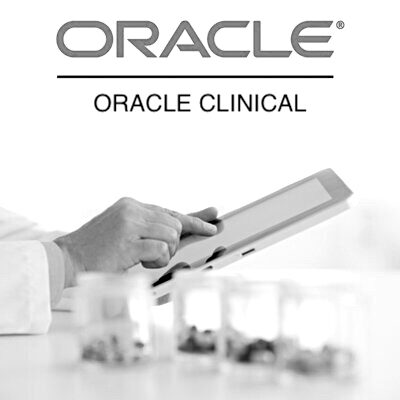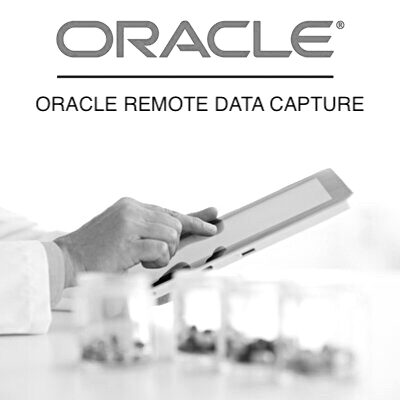Table of Contents
- Computers in Clinical Development
- Overview – Computers in Clinical Development
- Clinical Trial Management Systems
- Clinical Data Management Systems
- Pharmacovigilance/ Drug Safety Systems
- Electronic Data Capture Tools
- You may be interested in…
- Oracle Clinical Fundamentals
- Oracle Clinical – Live Online
- Oracle Remote Data Capture
- Diploma in Clinical Data Management
Computers in Clinical Development
The use of Computers in Clinical Development has been evolving rapidly. The clinical development branches can broadly be categorized into two.
- Clinical Operations
- Clinical Data Management
The Clinical operations team as the name signifies works towards conducting the trial in all aspects that relate to its medical feasibility while following the prevailing regulatory laws. Broadly their job includes CRF development, distribution, versioning, corrections, approvals, recruitment of sites, investigators and local labs. They have to maintain a close eye on the study with respect to its medical outcomes and act as a bridge between the data management team and the investigators.
The Clinical data management team works towards managing the patient data that is generated from the trials. The data management team broadly does the job of receiving, logging, storing, managing, cleaning and analyzing the data received. Any queries generated during the cleaning of the data are clarified from the investigator with the help of the clinical operations team.
Overview – Computers in Clinical Development
Computers have changed the way that the above teams function. The data collection and management process is moving from being paper based to being electronic based, however at present it is not completely either of the two. Thus the current situation is that paper based methods are used in combination with electronic methods thus creating a hybrid system.
Several software companies such as Oracle, Phase-forward and Siebel etc have come up with clinical trial/ clinical data management tools for the industry to facilitate both the operations as well as the data management teams. The broad categories to which these computerised systems belong are as under:
- CTMS (Clinical Trial Management System)
- CDMS (Clinical Data Management Systems)
- Drug Safety/Pharmacovigilance Systems
- EDC Tools
Clinical Trial Management Systems
The CTMS is a computerized system that especially is designed for the clinical operations teams. A CTMS helps the operations team to store, manage and analyse trial related information such as No. of Patients enrolled, Site Information, Drug Accountability and dispatch, financial information pertaining to the trial and recruitment. The CTMS also facilitates randomisation of patients and automates the process of their enrolment. Examples of CTMS are Site Minder/Trial Minder (Oracle Corp.). The CTMS products basically tend to streamline the process of conducting a trial while also allowing the generation of metrics to see if the trial is going on the right track.
Clinical Data Management Systems
The CDMS is a computerized system that is designed for the Clinical data management team. A CDMS helps the data management team to store, manage, clean, track and analyze clinical data received once the trial has been initiated. A CDMS has the capability of tracking the CRFs, doing a first pass and a blinded second pass data entry. Rules or validation procedures can be designed in a CDMS database to check for blank, incomplete, incorrect or out of range data so that a discrepancy is raised to be followed up with the investigator.
It has a discrepancy database to store and manage these discrepancies. Every action whether, data entry, modification or deletion of any data point in the database is stored as an Audit Trail which tells us who made the changes to that data point, at what date and time and also what was the previous value for that data point. Finally a CDMS allows for creation of electronic data-sets that can be extracted into SAS, analyzed by a bio-statistician for further cleaning and finally submitted to the regulatory authorities.
The CDMS has changed the way data is stored, managed, analyzed and submitted. Initially truckloads of filings had to be sent to the regulatory authority which was a cumbersome process. Examples of CDMS include Oracle Clinical (Oracle Corp.), ClinTrial (Phase-forward) and the very new SAS Drug development (SAS Inc).
Pharmacovigilance/ Drug Safety Systems
Safety system is a computerized system that is designed for the Drug safety teams. For every drug that undergoes a trial there are events encountered which may be due to high dose of the drug, toxicity of the drug or an allergy to it (ADR). In some cases it may not be related to a drug (AE). In some cases it may also result in death, hospitalization, prolonged hospitalization, permanent disability or congenital anomaly for the patient (SAE). All these forms of events have to be recorded and especially analyzed and reported to the sponsor. In case of SAE expedited reporting need to be in place so that the information is provided to the sponsor immediately and a medical report can be sent by the sponsor to the regulatory authorities. A Safety system thus helps in storing, managing, analyzing and reporting information about AEs, ADRs, and SAEs in an efficient and timely manner. Examples of Safety Systems include Oracle AERS (Oracle Corp.).
Electronic Data Capture Tools
EDC tools are computerized systems especially designed for making things more streamlined for the trial as a whole. An EDC system allows access of the CDMS/ CTMS to the investigator over a basic web browser, which is available on all PCs today. An investigator can log on to the EDC system with his access details and enter all the patient information directly into the database rather than filling out the CRF pages which then need to be sent to the data management site.
This method is efficient, and simpler. Not only does this eliminate the need for first pass data entry but also most part of discrepancy management as the checks/ validations procedures designed in a CDMS for any trial run online against the data entered by the Investigator. Thus if he leaves a mandatory field blank or incomplete or fills it incorrectly the system gives an error and he needs to fill in the correct value. If he stills enters an incorrect or out of range value, a discrepancy is raised and the investigator will be able to see all the discrepancies for the data he has entered.
This method thus eliminates fraud or negligence on the part of the investigator and much less queries are raised, not to forget that it is more cost effective as DCF’s need not be printed and sent out. If at all there are DCFs raised by the data management team, they are available in the inbox of the investigator when he logs into the centralized system with his login credentials. Examples of EDC systems are Oracle RDC (Oracle Corp.) and Inform (Phase-forward).
Having said this there are certain drawbacks of using computerized systems like EDC. These involve expense on IT infrastructure as computers and network connectivity needs to be set up at each site so as to be connected to the centralized CDMS or CTMS and this cost is what sponsors are not willing to incur at this time due to the technology being nascent. However with time as companies begin to feel they have a good ROI (return on investment) if they invest on EDC, the technology would change the way clinical data is managed today.
This completes our discussion on Computers in Clinical Development. We hope this helps you get some insight into the development of Computers in Clinical Development.
For a deep insight into the world of pharmaceutical research and development, subscribe to our Clinical Research Knowledgebase
Want a explore a career in Pharmaceutical Research and Development? Join our Diploma in Clinical Research program and kick-start a career in Clinical Research.





Thank you sir
okk good work